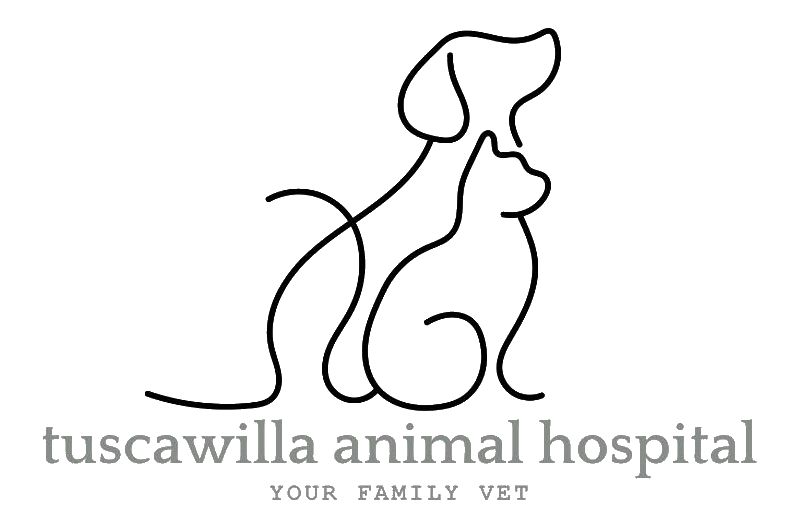Is My Dog Brachycephalic?
Is My Dog Brachycephalic? – Thanks for reading this article. We want to ensure your dog lives a healthy long life. Tuscawilla Animal Hospital which proudly serves Winter Springs, Casselberry, Oviedo, and the great Seminole County Florida area wants to share a simple way to help your dog avoid any breathing health-related from being Brachycephalic.

Let us first define this word for you – the term “brachycephalic” typically refers to a short-nosed dog breed. It can also be used to describe a dog that has an abnormally flat face. Simply put, the word Brachycephalic describes and/or defines a short-muzzled dog. So when you ask yourself – Is My Dog Brachycephalic? The answer can be seen in their face.
A brachycephalic dog is classified as having a short muzzle. The dog’s muzzle is shorter than the skull’s length and it is typically caused by the shortening of the soft tissue in the nose. A brachycephalic dog may have difficulty breathing because of the obstruction of the airway.
Brachycephalic dog breeds typically have the following features:
- Very small trachea or windpipe
- Very little room in the mouth to accept a long tongue
- Much more narrow nostrils than a typical dog
- Floppy ears which can obstruct the airway
Why do people breed brachycephalic dogs?
Breeders like to breed this type of canine because they are cute and the owners want to show off their dogs. The trend of breeding brachycephalic dogs has led to a growing number of people caring for their pets with breathing problems. Brachycephalic dogs are cute and easy to spot from other dogs. These breeds have a more human-looking face versus a normal dog which has a longer snout. Some people get these breeds to use in dog show competitions.
The British Veterinary Association and the American Kennel Club believe that many brachycephalic dogs should not be bred because they are prone to have various health problems due to their unnatural facial structure. The American Kennel Club was formerly campaigning for mandatory health testing for all breeds with brachycephalic tendencies.
Since then, breeders now have to prove their breeding stock has no defects, in order to be awarded registration certificates from these governing bodies. There have been further concerns, as to the welfare of these dogs, especially with regards to French Bulldogs. There are reports of many health problems in France, but thankfully here in the United States that is not the case.
What breeds are brachycephalic?
Brachycephalic dogs, such as Pugs and Bulldogs, have very short faces which can cause problems with the way they breathe. The airways in these breeds are not able to expand enough to allow for adequate airflow. They often have a narrow trachea and elongated soft palate which causes the air to flow out of their nose instead of the mouth.
Some breeds are more susceptible to brachycephalic airway syndrome than others.
The following are the 10 breeds that are brachycephalic: Bichon Frise, Pekingese, Lhasa Apso, French Bulldog, Boxer, Pug, Boston Terrier, Shar-Pei, Bulldog, and Shih Tzu. All these breeds have a short snout that is associated with a lower bite than average.
What makes a dog brachycephalic?
As mentioned earlier the dog breeds who have short noses are called brachycephalic. The most common issue with this type of dog is their respiratory system. They are more likely to have problems breathing and they are also more likely to have heat stroke. The skull of brachycephalic dogs can grow to be very long and narrow. The muzzle is also smaller than in non-brachycephalic breeds. The short muzzles and narrowed nostrils lead to breathing difficulties. The soft palate can also be affected by the deformity of the skull.
- The short, flat face allows the air to flow in and out of the lungs easily.
- There is a large head that can be supported by the muscle tissues in the neck.
- The lower jaw is pushed back a little which provides space for the tongue to move during breathing.
- The eyes are placed on the side of the head where they are better protected.
- The muzzle is shorter which allows less water to be swallowed when drinking.

The short and broad head shape of a brachycephalic dog is caused by a shortened skull that can’t accommodate the size of the brain. A variety of factors can lead to this condition, including genetics and environmental factors like an under-sized jaw. This is common to see in the Boxer breed.
The nose and mouth of a brachycephalic dog are very close together. As a result, the soft palate (muscle separating the throat from the nasal cavity) is enlarged to compensate for the short and broad head shape of a brachycephalic dog. This is caused by a shortened skull that can’t accommodate the size of the brain in some cases.
What types of health issues do brachycephalic dogs have?
Did you know that a brachycephalic dog breed that might have health issues? It is true that is the case for a brachycephalic dog. A list of health issues that can affect these dogs includes eye problems, breathing problems, and skin problems. A condition that can affect a brachycephalic dog is called “reverse sneezing”. Reverse sneezing happens when the dog’s soft palate folds and obstructs its airways. People who are adopting a brachycephalic dog can help their dog’s overall health by trying to minimize problems from the dog’s body shape.
Here are a few more issues these types of canine have to deal with:
- A brachycephalic dog has a short muzzle and nose which can cause difficulty eating
- This shortness of the muzzle can lead to breathing problems
- Unfortunately brachycephalic dogs often have a shorter life span than non-brachycephalic breeds
A list of ways that a person can help their brachycephalic dog live a full life includes:
- Supplying frequent breaks from activity
- Avoidance of exercise when it’s hot
- Keeping the dog in a shady area
- Providing outdoor relief areas with cool and clean water
- Providing indoor relief areas with air conditioning and clean fresh water
- Using ice packs to help relieve heat stress
- Not leaving the dog in a parked car
Why are brachycephalic dogs at a greater risk for breathing issues?
As mentioned earlier, this type of dog breed has a different facial structure. Therefore, many dogs that have a flat face and have a smushed nose are more likely to have breathing problems. Most brachycephalic dog breeds are at risk of developing respiratory problems. Such dogs have disproportionate soft palates, nasal cartilage, and tongues. The airway openings are narrow and might cause hindrance in breathing.
Long-term breathing difficulties are common for these breeds. Plus they have an issue with not having the ability to cool down normally too. Brachycephalic dogs sometimes have a breathing disorder is called brachycephalic obstructive airway syndrome, or BOAS, and is a progressive, lifelong disorder that can impair a dog’s ability to exercise, play, eat and sleep. Here are some signs your dog is suffering from BOAS –
- Dyspnea (breathing difficulty)
- Noisy/labored breathing
- Stridor (high pitched wheezing)
- Continued open-mouth breathing
- Extending of head and neck to keep airway open
- Stress and heat intolerance during exercise
- Snoring
- Gagging
- Choking easily
- Regurgitation and/or vomiting
- Collapsing and/or passing out
Can you provide some tips to help keep your dog’s breathing healthy?
- Keep your dog at a healthy weight
- Have your vet check for any underlying health problems
- Keep your dog active
- Keep up with recommended vaccinations
- Invest in a quality pet insurance policy
- Practice feeding your dog in a controlled manner
- Maintain your dog’s activity level; avoid inactivity and weight gain.
Thanks for reading this blog article on if your dog is brachyephalic, this blog article was prepared by the Tuscawilla Animal Hospital.
The Tuscawilla Animal Hospital wrote this article to help you better understand ‘Is My Dog Brachycephalic?’. You might still have questions, feel free to call us and ask our caring staff members who are caring for your pet. Follow us on Facebook now! Remember we love caring for your pet no matter what stage of life he or she is in. Again, thanks for reading this blog article.